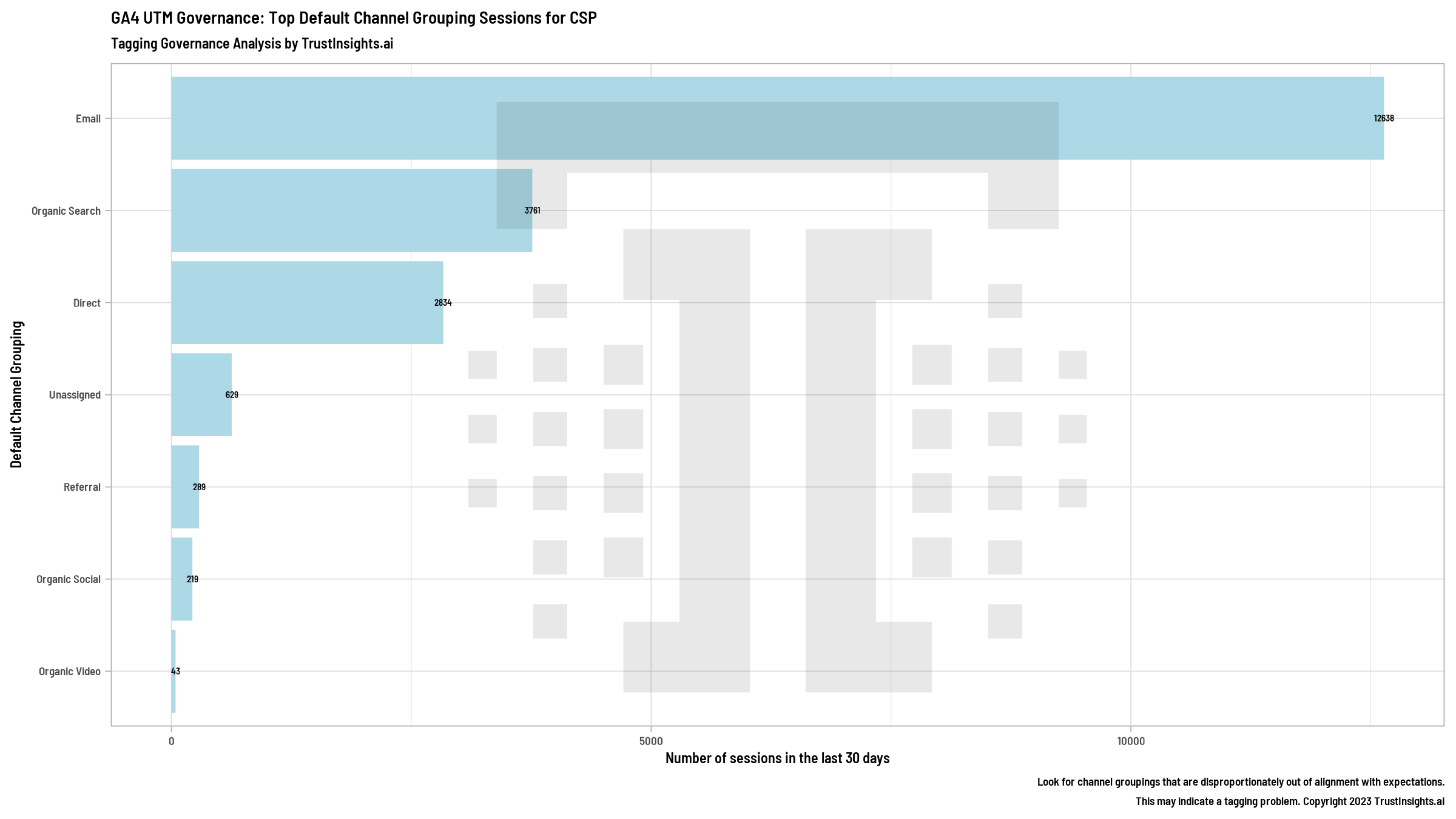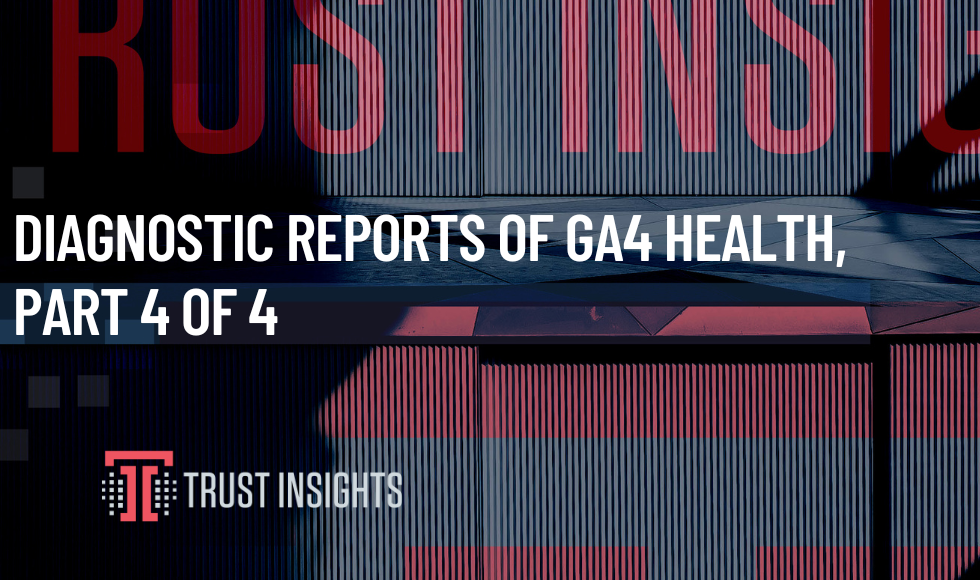As we covered recently on the Trust Insights livestream, Google Analytics 4 can be a bit cumbersome to use. So starting this week, I’ll be sharing a four part series on diagnostic analytics for GA4, to understand whether or not your GA4 is working correctly. It’s important to note that we won’t be examining GA4 for marketing purposes – this is bare bones, bare metal “is it working?” Stuff.
This week, let’s dig into default channel grouping traffic. I personally extract the data from GA4 via the API but you can easily build this chart in seconds in the Explorations menu. Choose default channel grouping as your dimension and sessions as your metric:

It’s important to understand how Google assigns default channel groupings, so that we understand what traffic falls in each bucket. Google has some fairly decent documentation on the topic, on this page.
This is the reason why UTM tracking codes are so important to standardize and use according to Google’s guidelines. In doing so, you reduce the work needed to get traffic to fall in the correct buckets, which in turn makes things like attribution analysis work much better.
What we’re looking for in our default channel grouping traffic is balance. Ideally, no one channel should be greater than 50% of your site’s traffic. If it is, there’s a possibility that channel may pose a risk to your marketing strategy. This is especially true of mediated channels.
A disintermediated channel is a channel you have control over for the most part. These are channels like email, SMS messaging, direct mail, or other methods that allow you to reach a customer or audience member directly with minimal interference. When you send an email or a mass text, you can be reasonably certain that a decent amount of that message will arrive to your audience.
Mediated channels are channels that have an intermediary, usually AI-powered, standing between you and the customer. These are channels like organic search, social media, and ad channels. You do your best to create effective content for these channels, but you have no guarantee that more than a tiny slice of your audience will see the message in a timely manner.
For example, a long time ago I worked in financial services, and the owner had cleverly bought a bunch of very high value domain names early on that, back in those days, nearly guaranteed you top rankings in organic search. One year, Google changed its internal algorithm substantially, and the website – which earned more than 95% of its traffic from Google – dropped to the #4 spot in search results. The effect was an immediate 70% loss in revenue for the company, because the website was so reliant on a mediated channel.
Disintermediated channels such as email can be more than 50% of your traffic, but it’s still a best practice to try farming as much traffic as you can from diverse sources, so that your level of risk is spread out.
That concludes our series on basic GA4 diagnostics. Hopefully you found it helpful and your GA4 instance is now in good base operating shape.
Shameless plug: if you want these analyses done for you, rather than you doing them yourself, contact us.







